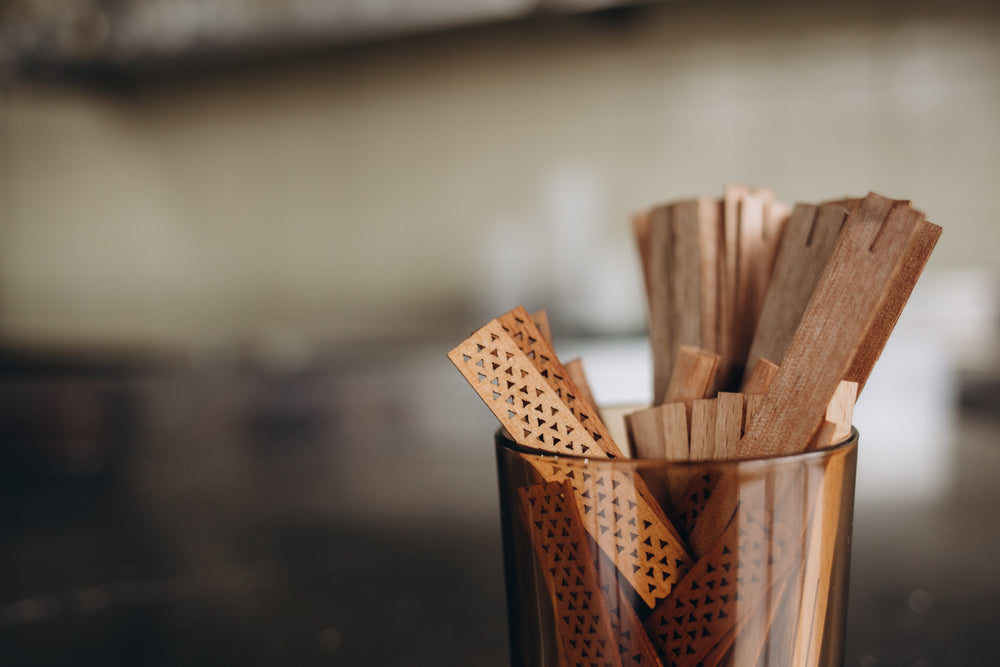
wicks: why one size doesn’t fit all
Share
The choice of wick in candle making is crucial because it directly impacts the performance, safety, and aesthetics of the candle. Different wicks can affect how the candle burns, the amount of soot it produces, the fragrance throw, and the overall burn time. Here’s why different wicks matter:
1. Burn Performance
- Wick Size & Type: The size and material of the wick influence how the candle burns. A wick that’s too small for a candle may result in a weak flame, causing the candle to "tunnel" (burning down the center, leaving wax around the edges). Conversely, a wick that's too large could lead to an overly large flame, causing excessive heat, flickering, and faster wax consumption.
- Wax Compatibility: Different waxes have different melting points, and some wicks perform better with certain wax types. For example, soy wax typically requires a thicker or more robust wick compared to softer waxes like paraffin. Using the wrong wick for the wax type may lead to incomplete combustion, uneven burning, or wasted wax.
2. Fragrance Throw
- Scent Release: The right wick helps the candle reach the optimal temperature to fully melt the wax and release the fragrance oils effectively. A wick that is too small may not generate enough heat, resulting in a weak scent throw. On the other hand, a wick that is too large may burn too hot, causing the fragrance to evaporate too quickly.
- Even Distribution: The wick helps distribute the heat evenly across the surface of the candle, ensuring that the fragrance oils are properly heated and released, which is key for a consistent fragrance throw throughout the burn.
3. Soot and Smoke Control
- Clean Burn: A properly sized wick will produce a clean burn with minimal soot or smoke. An oversized wick can lead to excessive flame height, which may result in soot, blackened containers, or walls. It may also cause the candle to burn too quickly.
- Safety: A wick that burns too hot or produces excessive soot can be hazardous. For example, soot buildup can cause health concerns or damage to the environment, and a wick that burns too aggressively can overheat and cause a fire hazard.
4. Burn Time
- Efficiency: The wick directly affects how long a candle lasts. A wick that is too small for the candle may cause the wax to pool and burn away too quickly. A properly sized wick ensures that the candle burns efficiently and consistently, maximizing burn time.
- Wax Pool: The wick helps create a pool of molten wax around the flame, which is necessary for an even burn. If the wick is too small, the wax may not melt evenly, leading to waste and a short burn time.
5. Candle Appearance
- Flame Size and Aesthetics: Different wicks produce different flame sizes. A wick that's too large will result in a larger flame, which can be too intense, while a small wick may produce a flickering, weak flame. Both can impact the visual appeal of the candle.
- Tunneling Prevention: The right wick helps prevent tunneling, where the candle burns down the center but leaves wax along the edges. This creates an unattractive candle and wastes wax. A wick of the proper size helps the candle burn evenly, minimizing tunneling.
6. Wick Materials and Construction
- Cotton Wicks: These are the most common type of wick and are often chosen for their clean-burning properties. They can be braided or twisted and are generally suited to all-natural waxes like soy, beeswax, and coconut.
- Wooden Wicks: These wicks create a unique crackling sound when burned, which mimics the sound of a fireplace. They are often chosen for a cozy, rustic feel and generally burn cooler, so they may require a different approach to fragrance and wax formulation.
- Hemp Wicks: Made from hemp fibers, these are an eco-friendly alternative to cotton wicks. They tend to have a slower, steadier burn and are great for eco-conscious candle makers.
- Linen Wicks: Similar to cotton but made from linen, these wicks burn cleanly and are favored for high-quality candles. They often burn slower and create a stable flame.
TLDR:
Choosing the right wick is essential to creating a successful candle. It ensures that the candle burns safely and efficiently, provides an optimal fragrance throw, and improves the overall aesthetic experience. The size and material of the wick should be matched to the type of wax, fragrance load, and container size to achieve the best performance. Understanding how wicks interact with different candle elements can help avoid issues like soot, tunneling, or weak fragrance release, ultimately resulting in a high-quality candle.